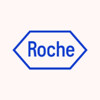
A Phase II, Open-Label Trial Evaluating GV1001 in Advanced Hepatocellular Carcinoma.
CarcinomaHepatocellularThe purpose of this study is to investigate the efficacy of GV1001 in locally advanced or metastatic HCC. Also the safety of GV1001 and immunogenicity will be evaluated.

Oxaliplatin + 5-FluoroUracil/LeucoVorin (5-FU/LV) (FOLFOX4) Versus Doxorubicin as Palliative Chemotherapy...
CarcinomaHepatocellularPrimary: Overall Survival (OS) Secondary: Time to Tumor Progression (TTP) Response Rate (RR) Improvement of Quality of Life (QoL) Safety Secondary resection rate

Sorafenib With TACE to Treat Hepatocellular Carcinoma
Hepatocellular CarcinomaThe purpose of this study is to determine the feasibility to combine sorafenib with transarterial chemoembolisation in patients suffering from hepatocellular carcinoma.The hypothesis is that sorafenib may prevent the development and growth of tumoral lesions not treated by chemoembolisation.

Proton Beam Irradiation for the Treatment of Unresectable Hepatocellular Cancer or Hepatic Metastases...
Hepatocellular CancerCholangiocarcinoma1 moreThe main purpose of this study is to determine if high doses of radiation using proton beam can be given safely with low and acceptable side effects. We will also gather information to determine the ability of proton beam to destroy cancer cells in the liver. There are two types of external radiation treatments (proton beam and photon beam). Proton beam radiation is a very accurate kind of treatment that has been shown to affect less normal tissue than a regular radiation beam. The accuracy allows us to more safely increase the amount of radiation delivered to eliminate cancer and may potentially reduce the side effects normally experienced with standard radiation therapy.

Comparison of Microwave and Radiofrequency Ablation for Liver
Hepatocellular CarcinomaAccording to randomized controlled trial requirement, the therapeutic effectiveness of cooled-probe microwave ablation and radiofrequency ablation on early-stage hepatocellular carcinoma is compared to find a better approach for minimally invasive thermal ablation.

Study of SECOX Versus Sorafenib as First-Line Treatment in Patients With Advanced Hepatocellular...
CarcinomaHepatocellular1 moreThe purpose of this study is to determine if sorafenib, capecitabine and oxaliplatin (SECOX) regimen is more effective than sorafenib alone in the treatment of advanced liver cancer.

A Study of Capecitabine (Xeloda) and Peginterferon Alfa-2a (Pegasys) in Treatment-Naive Participants...
CarcinomaHepatocellularThis study will evaluate the efficacy and safety of capecitabine (Xeloda) in combination with peginterferon alfa-2a (Pegasys) in participants with advanced liver cancer who have had no prior treatment. The anticipated time on study treatment is until disease progression, and the target sample size is 43 individuals.

Stereotactic Body Radiation Therapy for Hepatocellular Carcinoma
Hepatocellular CarcinomaThe standard treatment for hepatocellular carcinoma (HCC) is surgery, such as, by hepatic resection or liver transplantation, but less than 20% of HCC patients are suitable for surgery. In the remaining patients with inoperable and advanced HCC, trans-arterial chemo-embolization (TACE) has been widely used but TACE alone rarely produces complete response and commonly develops recurrence. Recently several small studies reported high tumor response and local control rate after stereotactic body radiotherapy (SBRT) alone or with TACE for inoperable HCC. A single institution phase II trial with SBRT for inoperable HCC after incomplete TACE at Korea Cancer Center Hospital showed promising results: the overall response rate of 73% and 2-year local control rate of 95%. They reported severe gastrointestinal toxicity of 11% because there was no normal tissue constraint for gastrointestinal tract and dosage to gastrointestinal tract was restricted to the lowest levels possible. In addition, they found that the presence of gastroduodenal ulcer before SBRT was significantly influenced on severe gastrointestinal toxicity. Based on this study, we will conduct a multicenter phase II trial on maintenance of treatment results and reduction of severe treatment related toxicity below 5%. To achieve this, we strictly apply normal tissue constraints. Secondly, we will do Esophagogastroduodenoscopy (EGD) before SBRT to evaluate gastroduodenal ulcer. After then, we will apply the normal tissue constraint of gastrointestinal tract according to gastroduodenal ulcer.

Transcatheter Arterial Chemoembolization Combined With Sorafenib for Unresectable Hepatocellular...
Hepatocellular CarcinomaFace CancerHepatocellular carcinoma (HCC) is the 6th most common cancer and the third most frequent cause of cancer death worldwide. Hepatic resection (HR) has been the standard treatment modality for HCC aiming at clinical cure. In both Europe and Unit States proposed guidelines for HCC, HR was recommend only for patients with a single HCC lesion and preserved liver function . Unfortunately, only 10%-30% of HCCs are amenable to such "curative" surgical resection at the time of diagnosis, because of tumor multifocality, portal vein invasion, and underlying advanced liver cirrhosis . Alternatively, transarterial chemoembolization (TACE) has become the most popular modality for palliative treatment for the other patients. However, the long term outcomes were generally poor for HCC patients treated with TACE. Recently, sorafenib has shown some promises in improvement of 3-month survival among patients with advanced HCC. It is claimed that sorafenib has become the standard of care for patients advanced HCC. Thus, the purpose of this study was to prospectively compare the effectiveness of sorafenib combined with TACE with that of TACE alone in the treatment of unresectable HCC .

Sorafenib Tosylate and Yttrium Y 90 Glass Microspheres in Treating Patients With Liver Cancer That...
Advanced Adult Hepatocellular CarcinomaBCLC Stage C Hepatocellular Carcinoma9 moreThis phase II trial studies how well sorafenib tosylate and yttrium Y 90 glass microspheres work in treating patients with liver cancer that cannot be removed by surgery. Sorafenib tosylate may stop the growth of tumor cells by blocking some of the enzymes needed for cell growth. Yttrium Y 90 glass microspheres use glass beads to carry radiation directly to tumor cells without harming normal cells. Giving sorafenib tosylate with yttrium Y 90 glass microspheres may be an effective treatment for liver cancer.
